Make no mistake that PR professionals are paid to ‘sell’ their clients to the media and the public, coaching them how to behave during interviews or answer tricky questions, polishing up their speeches and combing through their email responses for possible gaffes, setting up cordon sanitaire to keep unwanted media attention out, and showing up when summoned to manage a crisis or deflect a strike.
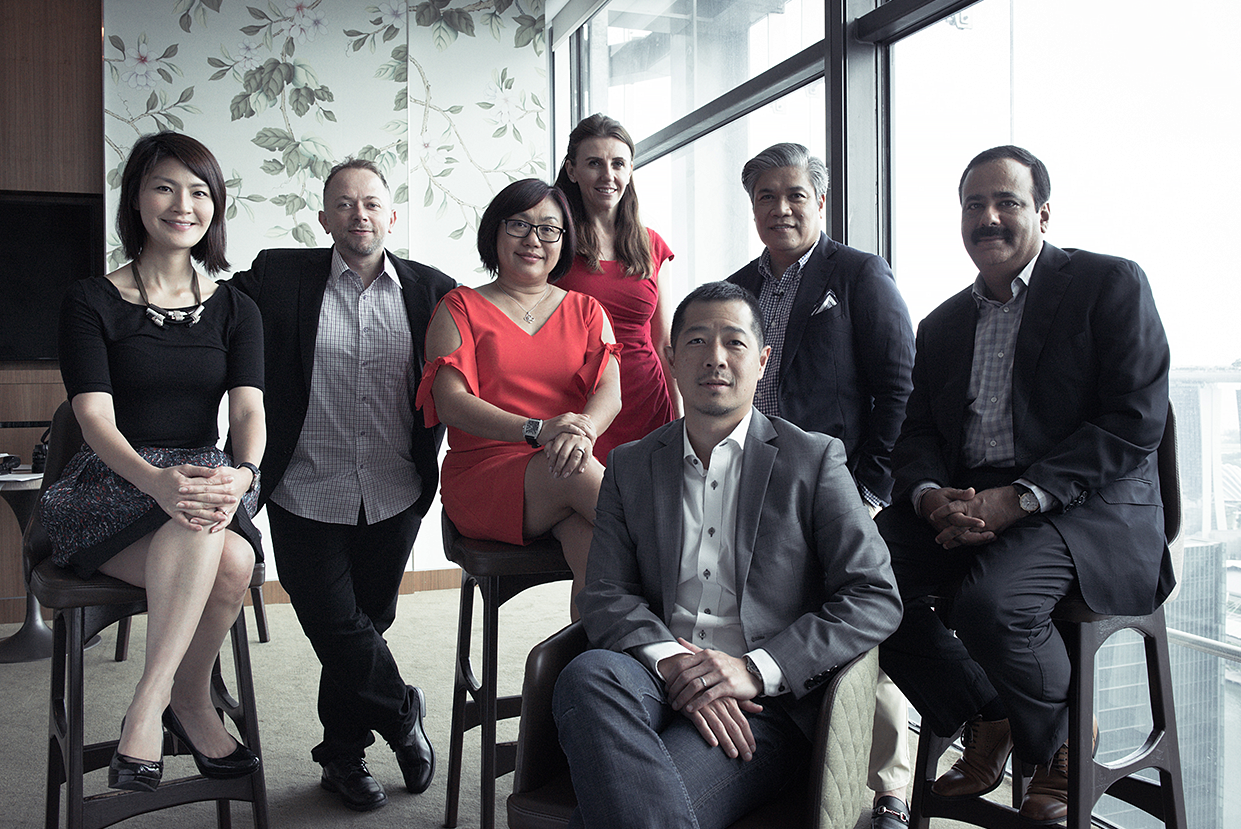
For all these, however, the best of them have done their jobs exceedingly well without compromising professional ethical standards, managing to present their clients’ interest in the best possible light, while at the same time staying on the side of truth and public accountability. I personally know some of them have declined to participate in what would have been lucrative hooplas that unfortunately went against to their principles.
Partnerships with PR professionals have long been one of the pillars that hold up our profession as journalists. They are our conduits to the people and organizations that are behind the topics we write about. Although at times we seem to be headed towards different directions, in reality we share a common interest in safeguarding public access to information.
When we decided to revisit this professional relationship, we invited some of the finest PR practitioners in Singapore. Nirvik Singh, chairman and CEO of Grey Group, Marina Mathews, MD of Chrysler Communications, Marc Ha, MD of Text 100, Poh Leng Yu, senior VP and GM (Singapore) of Ruder Finn, Emily Poon, deputy MD of Ogilvy Public Relations, and Lars Voedisch, principal consultant MD of PRecious Communications graciously accepted our invitation.
- A CLIMATE CHANGE
- POWER SHIFTS
- WHAT DO YOU REALLY MEAN?
- COMMUNICATING EXPERIENCE
- TOWARDS ETHICAL STANDARDS
A Climate Change
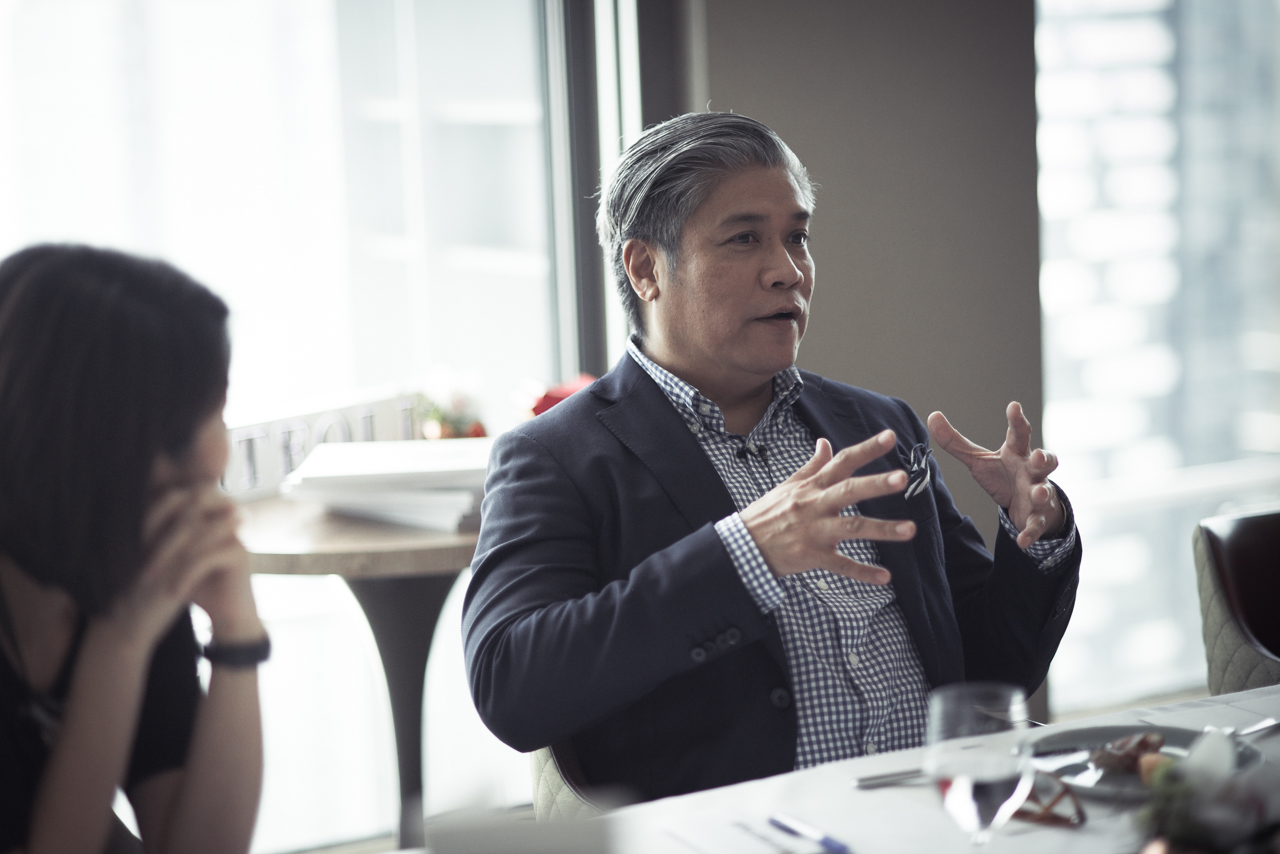
Real disruptions in journalism have been few. The latest and by far the most massive is the use of Internet technology in the dissemination of information – because it challenges the sources, flow and consumption of news. Before this, the one that comes to mind is CNN’s seamless coverage of the Gulf War in 1990-1991, in which satellite technology allowed journalist Peter Arnett to enter millions of living rooms across the globe with live reports from Baghdad. The urgency and immediacy of reporting turned the atrocities of war more real and horrific, but more importantly, it made us part of a global event instead of distanced, isolated viewers.
Lars Voedisch: I just had lunch with the GM of another PR agency. We were talking about how we used to send out our press releases using fax machines, and how that was only ten years ago. Some people say that everything now is instant news. I worked with the Dow Jones for several years – nothing in the news sector is faster than news wires. They influence stock prices within milliseconds. Speed has always been there. But we have democratized people having the ability to spread news by posting. The access to news has changed, as well as, of course, consumption patterns. This, however, has always been happening – the doom started when the radio came out, and then TV. I don’t think the changes that are currently happening differ much from what has evolved over the last 50 to 100 years. It has just become faster, and there are more things that are subject to change.
Marina Mathews: I agree with you. Back when I was studying PR, we had a guidebook with all the journalists’ contact details in it. Work was manual and very laborious. Today, you have many technological platforms. You can simply type in a few keywords, hit search, and you will be provided with thousands and thousands of journalists’ contacts.
However, there is a step further that you have to do in order to make sure that you are targeting the correct people. It does not give you all the answers, it gives you the data, but you will have to filter through it. It is just faster.
Marc Ha: The tools have changed. Access to information has greatly changed. Consumption patterns have changed. But what haven’t changed are the principles of news and newsworthiness. Ultimately, we still have to consider what is worthy of being news. For those who are not really paying attention to what they are reading, differentiating facts from opinion or fiction is a challenge. I think there are more landmines navigating through the content that is published online. Credible news media plays an important role in today’s world.
Emily Poon: Adding to what Marc said, I think that one big difference is that the frame of reference that people have nowadays has shifted. Back in the day, access to news within Singapore was what was in the Business Times. Today, we consume most of the news through news feeds, for example. It is really interesting to see that our frame of reference, and the way we perceive news has changed so much. But we perceive it with judgment and commentary from many others.
Nirvik Singh: I think that two things have changed fundamentally. Firstly, the Corporation is no longer in charge. It is, for the first time, the Consumer who is now in charge. If you look back at the time when television and radio emerged, the broadcaster was in charge. Now for the first time an individual consumer can change opinions. You can look at the world from a broadcast or a narrowcast, down to even ‘individual casts’.
Secondly, I think that different mediums used to exist in different titles. I believe this is the first time that there is an ecosystem that connects all types of media. You can’t distinguish between what is media and what is not. For the first time there is an ecosystem where they have come together. If you used to be a rich man in the West, you had a lot of access to different types of media. Today, the access is equal for most people. For the first time, consumers are made the center of this ecosystem. This is a big and fundamental change that has occurred.
Poh Leng Yu: That is quite scary. If I have more of a left-wing opinion, then I will share more of this rather than right wing news. Personally, I find this quite scary, in terms of the influence one now has on others.
Nirvik Singh: I think that now, for the first time, the world of media and big data have come together in a way that they have not ever before. People can now know what you like and dislike simply by checking on Facebook, which creates algorithms based on exactly this. There have been some tectonic shifts in the world of media. I don’t think that it is still the same like it used to be.
- A CLIMATE CHANGE
- POWER SHIFTS
- WHAT DO YOU REALLY MEAN?
- COMMUNICATING EXPERIENCE
- TOWARDS ETHICAL STANDARDS
Power Shifts

We all have become media outlets ourselves. We filter content and then we share it. We don’t even have to write about it—the mere act of sharing or liking news feeds or shared information is thought to signify belief. The challenge is to be mindful of our responsibility. Now more than ever we have to be mindful that we are sharing legitimately sourced and verifiable information.
Marc Almagro: But this can be a full-on doomsday scenario. Can we quickly go around the table and just say what we find positive about what’s happening today? Let’s just focus on the positive things.
Nirvik Singh: I think that all in all the change that has happened is very positive. The fact that the consumer is now in charge is very positive. In any world there will always be responsible people, and irresponsible people, just like it has always been. There have been publications that were left or right wing that shaped our opinions. Today, if you are a responsible person, you will be able to form your own opinion and pass it on to your friends. I also think that given the technology, news is shared much faster, which can be very important and helpful.
Marc Ha: This level of transparency has a lot of effect on the brands and their value. That in my eyes is another positive thing, because it allows a good basis to form an opinion.
Lars Voedisch: I believe that due to the transparency brands have become more human. In the past you were able to dictate all forms of engagement of your company. You can dictate your opening hours. Banks are, for example, still trying to do that. However, we are now be always online. It is the opposite of how we would originally staff people to work during specific times.
Poh Leng Yu: To me what is positive about this is that it opens up my world. I get a chance to read and ask. I don’t have to go to a library or do research in any other time-consuming way. Everything is just a few clicks away. However, the downside to this is that I have become a lot more impatient, like when a page takes about a minute to load.
Lars Voedisch: To some extent this convenience of consumption has always been there. Is the magazine available at the nearest 7-Eleven, or do I have to go to the next MRT stop? If I do then I will probably not buy it. But the other thing that I believe to be scary and great at the same time is the creation of a more level field. I believe that my agency wouldn’t have been able to have the success it has now ten or 20 years ago. Access to media, information, research and distribution has gotten so much better. Markets now have a lot more opportunities to share information. I think that it is great that through this openness people can access different markets and a lot more information. This allows ideas to prosper. The downside is that it gives a lot of responsibility to each and every individual to think about the repercussion of what we share, post and like, because we are now sending signals all the time for algorithms and everyone in our environment. To some extent we are driving these bubbles by what we find entertaining opposed to what is important. We find sharing things much more gratifying than reading a four-page article from The Economist.
Marina Mathews: With the new technological advancements, we have acquired the chance to understand what our consumers want and need. As an organization we can develop services to meet these wants and needs, as opposed to coming up with a product or service that we think is a good fit. This two-way-communication is what I find absolutely fantastic.
Emily Poon: For me the biggest opportunity is the two-way-communication as well. It is no longer just pushing communication towards the consumer, but instead consumers can dictate and pull in the information that they need and want. It goes back to what we PR practitioners do a lot – which is stakeholder communication. Nowadays a lot more listening and talking is done. A two-way conversation is created. With this democracy of sharing information comes a need for social responsibility. I think that in every challenge there is an opportunity. I think that this is an opportunity for us to do a lot more.
Marc Almagro: A lot of us (in journalism) find the digital platform more challenging. The openness of the medium allows for unverifiable content to flourish. The conflation of facts and opinions, more common online, can also be very distressing. Print has very precious real estate. If you give me 144 pages and tell me that 60 percent of those pages have to go to editorial and 40 to advertising, I will have to think through my editorial lineup carefully, and prioritize stories based on the requirements of my readers. Both challenges result in journalism that is better and sharper. You have to be really mindful of what you are putting out there and you have to be more creative.
Poh Leng Yu: But online content is not simply content. The content there needs to be interesting as well. For some brands that desire a lot of hits and likes they will show their audience cats or babies.
- A CLIMATE CHANGE
- POWER SHIFTS
- WHAT DO YOU REALLY MEAN?
- COMMUNICATING EXPERIENCE
- TOWARDS ETHICAL STANDARDS
What Do You Really Mean?
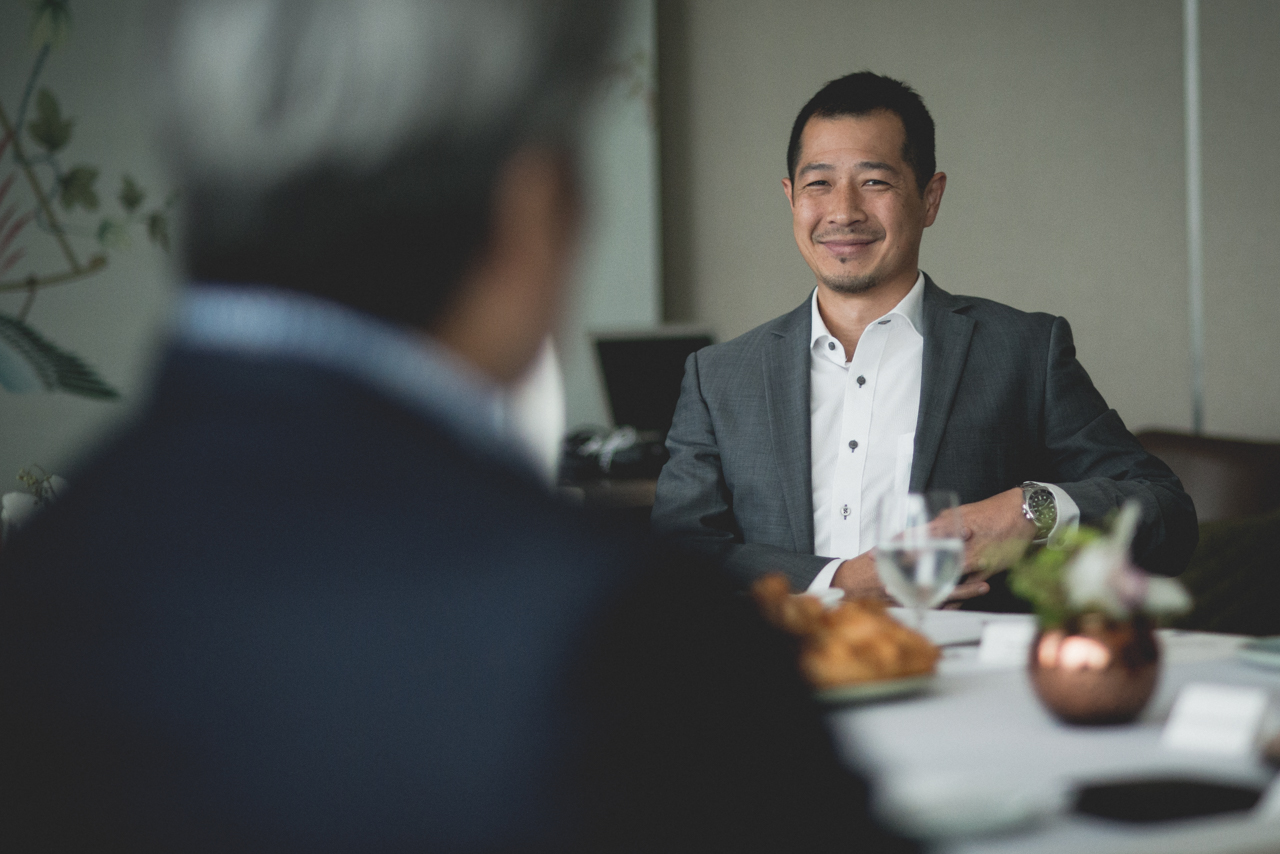
Communications expert Frank Luntz, in his book It’s Not What you Say, It’s What People Hear explains why pharmaceutical companies have come to emphasize ‘prevention’ and ‘wellness’ instead of the formerly common ‘treatment’, and it had to do with the negative images that treatment paints. The choice of platform and message, including the acknowledgment of their reciprocal relationship, is crucial in helping clients craft the message.
Marc Almagro: What are the things that your clients ask you to do? Now that most of us are tuned in 24/7, do they ask you to go there and help to create more presence? What are the requirements of today’s client?
Marina Mathews: I find that the savvier ones aim to go online, while the others still want print. The smarter ones know that the opportunities that they get online are much greater.
Nirvik Singh: I think we also have to consider that clients are different in different countries. If you look at P&G, they have television ads because they want to reach masses of people and are not sure that they can do this only using digital ads. If they used to invest 100 bucks in traditional media, then 20 bucks have now probably moved to the online space. It is a full cycle. E-commerce is booming so you should have digital investments. Why did Amazon just buy Whole Foods? I’m not sure that anybody has the answer.
Poh Leng Yu: Sometimes it just depends on the objective. In Singapore if you want to reach the attention of the government you will go into print advertising. If they want to reach a young audience, you will choose a different platform to advertise on.
Emily Poon: I think we are seeing a lot of clients coming to us saying: “Hey, I want to be where the consumer is, I want to be where the stakeholders are”. I think, as you said, there is a difference between trying to reach a government stakeholder or the man on the street. Rather than saying: “Here is a social strategy or here is a digital strategy”, it is much more about creating a holistic strategy. If we look at it that way, we can figure out how we can best reach the people that we are targeting through a variety of channels.
Marc Ha: I think that the fun thing with reaching all of these people today is that agencies have got so many access points and channels. Media is still very important but there are also many other ways to get out there that must be considered and that are accessible to us.
Lars Voedisch: I think it is on the client’s side as much as on the agent’s side. It is a bit of a challenge, since the complexity is increasing, as there are more and more channels. There are now more ways of bring a campaign to life. If anything it also means that a company needs more budgets. A lot of clients say that they want to continue whatever they have done so far, but also want to add something that they don’t have an additional budget for. If the budget is fixed they have to discuss how it is to be allocated. That complexity might scare a few people away. We work with a lot of start-ups. A lot of start-ups have this growth-hacking mantra. They only look at conversions, so only at the lower part of the sales funnel, and convert the heck out of it. The problem is that at some point this sales funnel is drying up, if you don’t add any new potential customers.
Nirvik Singh: I think that nothing has changed. We still go back to the basics. Who are the consumers that we are targeting? How does the brand differentiate itself from others? Some of the basic questions have remained. You have to tell a story – the way you tell the story has changed. I think that it is a very exciting time to develop a brand. Today is the only time where brands are living in pop-culture 24/7. Brands are in a good place, plus the feedback opportunities through social media are great. The consumer can talk to you. The way you tell the story is what has changed. It is now easier to get your word-of-mouth around.
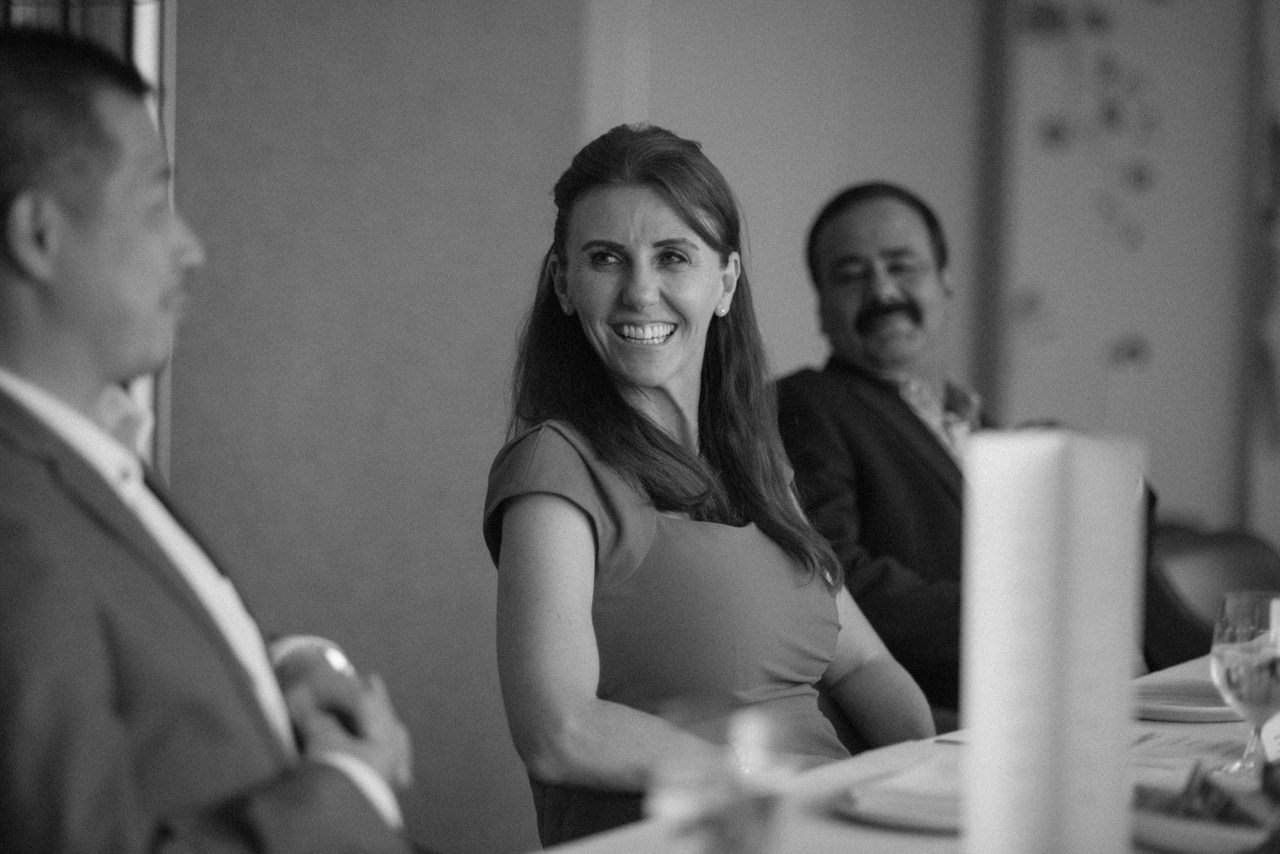
Marc Almagro: So is it really the speed that has changed? In journalism we still insist on truthfulness, reliability and so on. At the end of the day you want to answer any questions your reader might have. You have to do your research before you write your story and then you go out there and publish what you can verify as the truth. It hasn’t changed. You can go online for a shorter edit or a video, but the fundamentals have to stay the same.
Lars Voedisch: I think that the value of authenticity, for journalism and for brands even more will always have to be there.
Marc Almagro: To the point where we are now ‘manufacturing’ authenticity….
Lars Voedisch: But I also think that it is easier now to look through that. You might want to amplify it, but I don’t think that we can manufacture it.
Marc Ha: Even if we can manufacture it, people will see through it. We have large communities of enlightened people, special investigators, with amazing skills. They can easily call brands out.
Lars Voedisch: And again, what I have mentioned earlier, for our business and the same for brands, it is much easier to launch a brand nowadays, without huge budgets. You don’t have to be a Unilever or P&G. Look at Dollar Shave Club, which was bought for a billion dollars. At the end of the day, they solved a problem. And that is what I believe to be the key: What problem does a brand solve? Does it bring its solution across? Is it accepted in the market? Is it authentic? Then price doesn’t even matter so much. If people believe that your brand solves a problem well, or even better than other brands, then there is a market. Nowadays you have easier access to any market in the world. That’s a great thing, because it inspires innovation and scares the crap out of big brands, because budget alone can’t help you to defend yourself.
Emily Poon: I think to add to that, the fundamentals of brand building haven’t really changed, even though there are more disruptions in the market nowadays. The mission of brand building is still about building relationships and long-term equity. In order to do that, we need to build brands that matter, brands that actually solve the consumer’s problem. However, you should also aim to go beyond that, by questioning what the brand stands for, what is its purpose, and its narrative. Only through this will consumers be able to relate with you in the long run. Then you will be able to truly go past transaction into loyalty. At least from our perspective, it is really about brands that matter.
Lars Voedisch: Aren’t we, and especially the media, caught in that issue of ‘Yes, we all know it’s all about long-term relationship, but we still fight for the short-term attention’?
Emily Poon: I think nowadays we really have to question whether we get the short-term gain, or do I look at building the brand for the long-term. In the end, I believe that you have to aim for both.
Nirvik Singh: Amazon keeps saying that they are investing for the long-term. At the moment you have a lot of shareholders that are getting used to earning money from their shares every three months, you don’t have a choice. You have created that problem yourself. If you are not reliant on shareholders, you can do whatever you want.
Lars Voedisch: That’s why we have what is called ‘secondary markets’ and ‘alternative markets’. In these markets you have your Ubers and other start-ups that are long-term investments. They are a bigger bet on a different time frame. Investing in these is different from becoming the traditional shareholder. It used to be that IPO was the ultimate goal; now IPO might just cause problems that you don’t want to face.
Nirvik Singh: So considering brands, I believe the fundamentals will stay where they have always been. Will mass brands still play a big role in the business world, as the market aims for more personalized goods and experiences? Will mass brands have the ability to customize effectively? If you look at Coke – Coke has the ability to put your name on a bottle or can. That is incredible. A lot of brands can’t customize like that. As you get more and more personalized with your choices, what happens to big brands? That to me is the real question!
Poh Leng Yu: I suppose that over these years, all the mass brands have to find themselves and make their products or services interesting and creative, even M&M chocolates. At the end of the day it’s just chocolate, but they have gone into merchandising. It is about how creative a brand can be.
Nirvik Singh: Skittles have done an amazing job. The skittles pack has a rainbow. They take the rainbow on their packs as a sign of supporting the LGBT community. And that is a brand living in pop-culture. Just by doing that, they got free publicity that would have normally cost them millions of dollars.
Emily Poon: At the end of the day, doing that makes sense, if it aligns with the brand’s purpose and values. It is just living out your brand’s thoughts in different things that you do to create an enduring platform. That is interesting.
Lars Voedisch: Do you think that brands need to stand for something? Do they have to have a cause that they support, beyond pop-culture effectiveness?
Nirvik Singh: Research has discovered that the brands that serve a higher purpose become more successful. They always end up doing much better.
Lars Voedisch: Cathay Cinemas in Singapore – the Pink Dot ad has it helped them or hurt the brand?
Marina Mathews: I believe that it is helping them, because if you look at the response, it has largely been positive.
- A CLIMATE CHANGE
- POWER SHIFTS
- WHAT DO YOU REALLY MEAN?
- COMMUNICATING EXPERIENCE
- TOWARDS ETHICAL STANDARDS
Communicating Experience
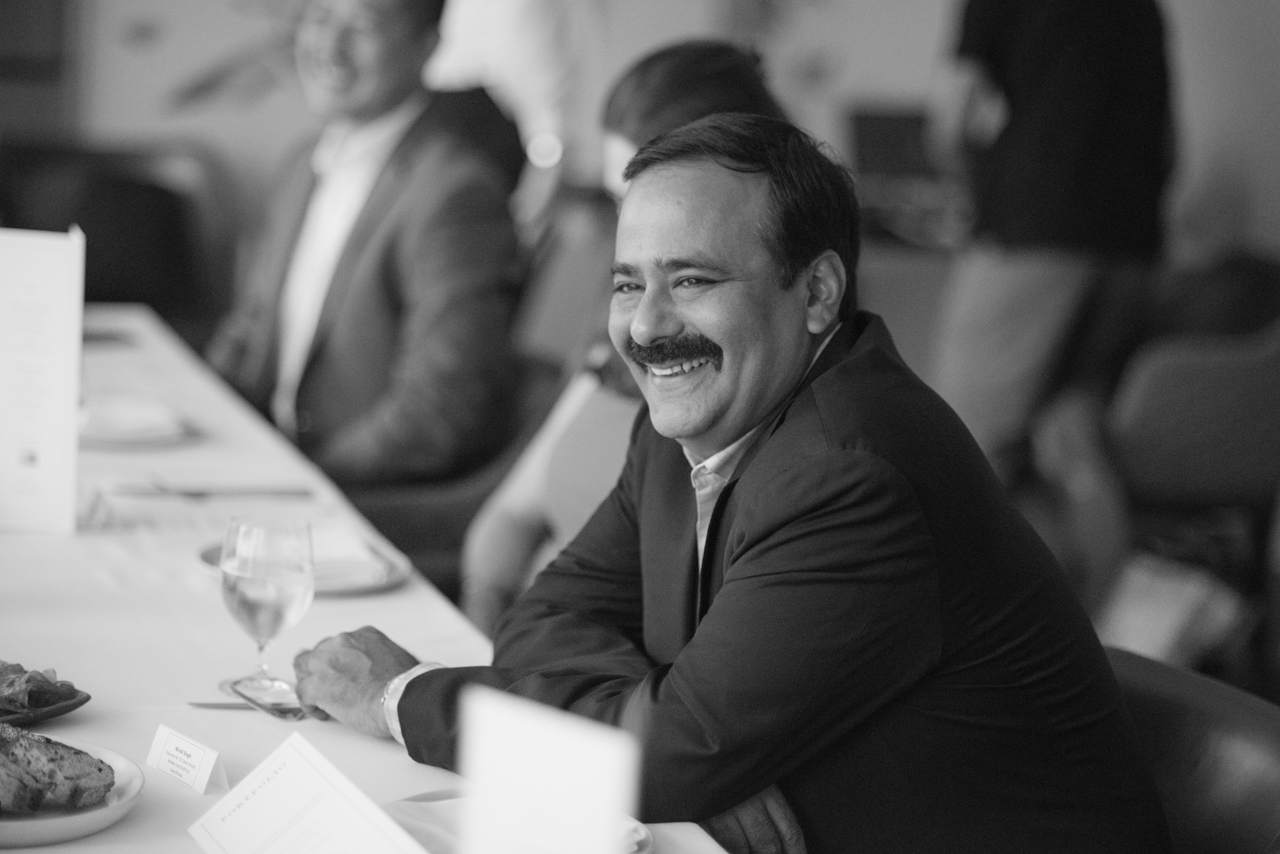
Among the theses proposed in Francesco Franchi’s Designing News: Changing the World of Editorial Design and Information Graphics is “the importance of content, the fact that good journalism can save the newspapers and that design can provide the support needed to give form to content and underline quality”.
Marc Ha: I think that brands can definitely shape interesting experiences for consumers. I think that one step can shape experiences that are still grounded in their purpose. Then obviously there is a lot of consistency and symmetry, between what brands say to the consumer and what the outcome in the end looks like. We can create conversations, but everything has to go back to your brand value.
Lars Voedisch: Apple is a great example! I was questioning for the longest time, why they need that flagship store in Singapore? It’s about creating experiences with the products. There was a study done, a few years ago. It was a survey about dating, where people were asked “Would you prefer dating someone that uses an iPhone, or someone with any other type of phone?” 80 percent of all people that took part in the survey said that they would prefer dating someone with an iPhone. As a brand that is probably the best outcome you can aim for. It is a perception of the brand and its reality that a brand should aim for.
Nirvik Singh: I think that while Samsung has been focusing on getting a better phone out, Apple has established itself as a luxury brand. Everything that they do, is done as a luxury brand would do it. If Gucci runs a flagship store, it would probably do so using very similar concepts to Apple. They have the margins of a Ferrari. Their margins are 30 percent, but they are the only people that have asset margins on the scale of a mass producing brand. They have mass scale productions and these phenomenal margins.
- A CLIMATE CHANGE
- POWER SHIFTS
- WHAT DO YOU REALLY MEAN?
- COMMUNICATING EXPERIENCE
- TOWARDS ETHICAL STANDARDS
Towards Ethical Standards
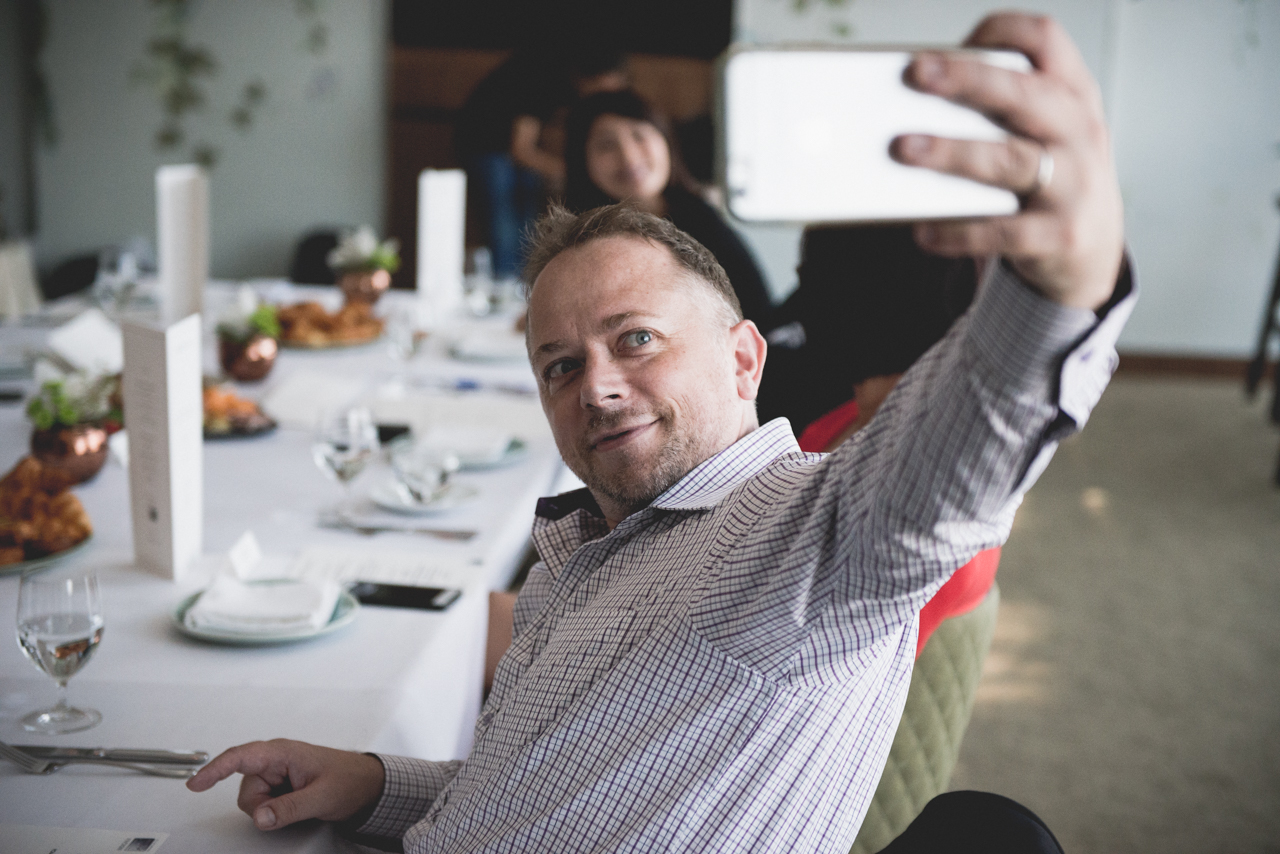
Truthfulness. Accuracy. Objectivity. Impartiality. Fairness. Accountability. These principles are articulated in different ways, but emphasize the same set of values that all journalists are expected to uphold in the conduct of their work. These values are enshrined in the set of rules that is unfortunately not implemented evenly. We have to rely take personal responsibility to ensure that they are upheld.
Marc Almagro: It has become difficult for us to stay true to the principles of journalism that we were taught in school for many reasons. There are content types and hybrids that we have become acceptable – sponsored materials, product placements, among them. Is it the same in PR? Are you moving into areas where you have to ‘massage the message’ because of commercial considerations? Or to be blunt, have you been asked to lie?
Lars Voedisch: Encouraged? Yes!
Marc Almagro: How do you answer people who ask, “Can’t you just say that?”
Lars Voedisch: “No, I can’t! We’re not doing that.” The reason is simply that we consider it to be wrong. You don’t lie! You can massage the truth, you can move the focus a bit, but in the end lies have short legs. The challenge is then not only to consider how it will affect the client, but also how it will affect me. I am the face of my brand. Especially in other parts of Asia we have been approached and asked if we can do black marketing campaigns. There are two big neighbors around us, known for doing so, not just in the politics, but also for brands. There is money for it, but it is just something that I wouldn’t do. Sometimes it might be easier to make decisions if you are running your own business, but generally I believe that any company should always rethink and consider: “What does the company stand for?” Lord Bell once said: “We are all operating in the court of public opinion and everybody has the right for an attorney.” That is how you can justify that also the worst dictators in the world need a PR person representing them. Would I assume that they always tell the ultimate truth? No! But that is the game I’m in.
Marc Almagro: So, Lars, it is your personal conviction that prevents you from lying for clients. Is there a Code of Ethics stating what you can’t do? In advertising, we are all familiar with topics or products that you can’t touch. In PR, does something like this exist?
Nirvik Singh: I don’t think so.
Marina Mathews: I don’t think so either. Perhaps there is a code of ethics within the individual organization, but on the industry level absolutely not. I have actually gone through a situation where another PR agency has misinformed the media about a certain topic, and I actually had to call out the agency because it had to do with something that I had been involved with previously. You just can’t lie. Showing this kind of misinformation to the media is just wrong.
Lars Voedisch: Sometimes we also get caught in questioning what is a lie. You know it’s not the best fish you’ve eaten, but you push forward with ‘That’s the best fish that has ever been prepared in the world’. Is that a lie or not?
Emily Poon: It’s really interesting what you brought up. What is acceptable to the community? When are we using a hyperbole, such as ‘extremely delicious’, and when are we being dishonest? I think that the line has to be drawn. Earlier we talked about professional standards and personal standards and I think, at least for me, there is a ‘duty of care’ for communications practitioners to the clients that we serve as well as the community that we are in. I think that this duty of care needs to be treated very carefully and seriously. Just like for doctors, patient care is their first concern – for us it has to be open, authentic and honest communication. We have to stand for that.
Lars Voedisch: It is really about passing it down to simple communications. We had the case of “We can’t hit the deadline with a journalist,” so one of my employees, who is no longer with us, said, “Oh, I’ll just tell the journalist that (excuse).” I said, “But you are outright lying if you do that. We probably won’t get called out, but still we shouldn’t do it.” Why start that in the first place? If you start once, where do you stop? It’s a holistic approach on integrity. Either you preach it and practice it or you don’t. All of us do sales one way or another. How honest are we there? How often do we know that the team that we are currently working with might have to change due to business realities?
Poh Leng Yu: Personally, I have turned down businesses if there is certain discomfort among my team members. Do you want to walk with offers like that or do you not? In the end I turned it down.
Marc Ha: It is also about the cultural values of the client. If you don’t have chemistry, both parties will probably agree that the business relationship wouldn’t be the best fit. Coming back to your original question about ethics in the PR industry: I think that we all need to do more when it comes to this. We need to establish standards for the industry.














-141.jpg&w=500&h=550&crop-to-fit)


.jpg&w=500&h=550&crop-to-fit)
 Back
Back